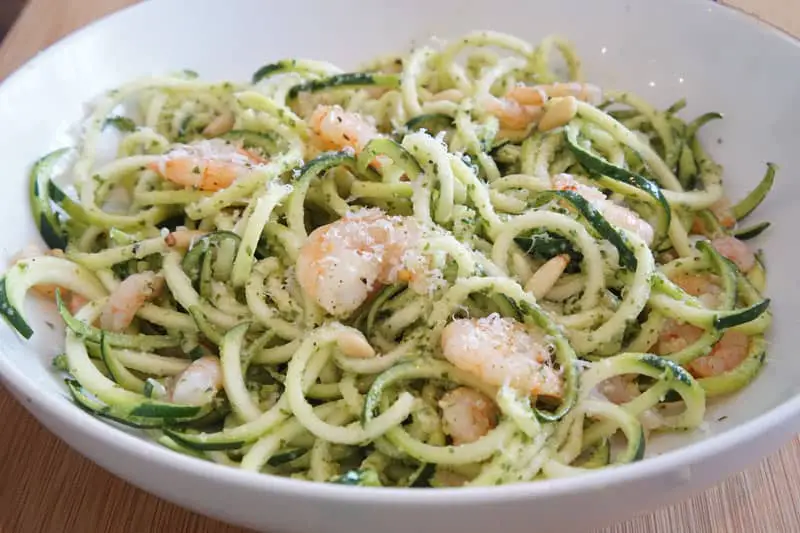A squirrel can fit around 2-3 nuts in its mouth at once. This varies depending on the size of the nuts.
Squirrels are fascinating creatures known for their ability to store food. Their cheeks are flexible, allowing them to carry multiple nuts simultaneously. This behavior is crucial for their survival, especially during winter. Squirrels gather and bury nuts to ensure a steady food supply when resources are scarce.
This natural instinct also helps in the dispersal of seeds, contributing to forest growth. Observing a squirrel’s nut-storing habits can provide insights into their survival strategies. These small but resourceful animals play a significant role in the ecosystem. Understanding their behavior helps us appreciate the intricate balance of nature.

Credit: coldplaying.com
Squirrels And Their Cheek Pouches
Squirrels are fascinating creatures known for their cheek pouches. These pouches allow them to carry and store food. But how do these pouches work? Let’s dive into the details.
Anatomy Of Squirrel Cheeks
Squirrel cheeks have special pouches. These pouches are flexible and stretchy. They start at the mouth and reach to the jaw.
The pouches are lined with skin and muscle. This helps squirrels fit many nuts inside. The cheeks expand to hold a surprising amount of food.
How Pouches Function
Squirrels use their pouches to gather food quickly. This is useful in the wild where danger is near.
They can fit multiple nuts in their mouth. The exact number depends on the nut size. Usually, a squirrel can hold up to 10 acorns at once.
Here’s a quick look at what they can carry:
| Nut Type | Approximate Count |
|---|---|
| Acorns | 8-10 |
| Walnuts | 2-3 |
| Peanuts | 20-25 |
The pouches are not just for food. Squirrels also use them to transport nesting materials. They can carry leaves, twigs, and other small items.
Squirrels have adapted to use their cheek pouches efficiently. This helps them survive and thrive in their environment.
Types Of Nuts Squirrels Prefer
Squirrels can fit multiple nuts in their mouths, favoring acorns, walnuts, and hazelnuts. Their cheek pouches expand impressively, allowing them to carry several nuts at once.
Squirrels have a keen sense for finding their favorite nuts. They rely on these nuts for energy and nutrients. Let’s explore the types of nuts squirrels prefer.Common Nut Varieties
Squirrels love a variety of nuts. Here are some of their favorites:- Acorns: Found in oak trees, rich in fats.
- Walnuts: High in protein, easy to crack.
- Hazelnuts: Small, packed with energy.
- Pecans: Sweet taste, high in calories.
- Almonds: Nutrient-dense, good for winter.
Nutritional Value
Nuts provide essential nutrients for squirrels. Each type has unique benefits:| Nut | Nutritional Value |
|---|---|
| Acorns | Rich in fats and proteins. |
| Walnuts | High in Omega-3 fatty acids. |
| Hazelnuts | Contain vitamins and minerals. |
| Pecans | Loaded with antioxidants. |
| Almonds | High in fiber and protein. |
Nuts And Squirrel Behavior
Squirrels are fascinating creatures, especially in how they handle nuts. Their behaviors around foraging and storing food are intriguing. Let’s explore these behaviors in detail.
Foraging Habits
Squirrels have keen senses to find nuts. They use their sharp eyesight and strong sense of smell to locate food. These clever animals can find nuts buried under snow or soil.
Squirrels are active during the day, especially in the morning and late afternoon. They spend much time searching for food. They often climb trees and dig in the ground to find hidden nuts.
Squirrels are quick and agile. They can carry multiple nuts at once, holding them in their cheeks and paws. This helps them gather food quickly and efficiently.
Storage Techniques
Once they find nuts, squirrels don’t eat them right away. They often store them for later. They use a method called caching, where they bury nuts in various locations.
- Squirrels dig small holes in the ground to hide their nuts.
- They cover these holes with soil, leaves, or other debris.
- Each squirrel can remember hundreds of these hiding spots.
This method helps squirrels survive during winter when food is scarce. They retrieve the nuts during colder months when fresh food is hard to find.
Interestingly, squirrels sometimes use fake caches. They pretend to bury nuts to trick other animals. This behavior helps protect their real food stores.
| Behavior | Description |
|---|---|
| Foraging | Searching for and collecting nuts. |
| Caching | Burying nuts in various locations for later use. |
| Fake Caching | Pretending to bury nuts to deceive other animals. |
Understanding these behaviors helps us appreciate the cleverness of squirrels. Their ability to gather and store food is truly remarkable.
Capacity Of Squirrel Cheek Pouches
A squirrel can fit up to ten nuts in its cheek pouches. These expandable pouches allow efficient food storage.
Squirrels are fascinating creatures, especially when they stuff their cheeks with nuts. Their cheek pouches are surprisingly spacious. Let’s explore how many nuts a squirrel can fit in its mouth.Factors Affecting Capacity
Different factors influence the capacity of a squirrel’s cheek pouches. Here are some key factors:- Species: Different squirrel species have varying cheek pouch sizes.
- Nuts Size: Larger nuts take up more space, reducing the number a squirrel can carry.
- Cheek Stretch: Some squirrels can stretch their cheeks more than others.
Average Number Of Nuts
On average, how many nuts can a squirrel fit in its mouth?| Species | Average Nuts |
|---|---|
| Eastern Gray Squirrel | 3-4 |
| Red Squirrel | 2-3 |
| Fox Squirrel | 4-5 |
Seasonal Variations
Understanding how many nuts a squirrel can fit in its mouth depends on various factors. One of the most significant factors is seasonal variations. These variations affect a squirrel’s behavior and storage habits. Let’s delve into the seasonal patterns and understand their impact.
Winter Hoarding
During winter, squirrels become expert hoarders. They store food to survive the cold months. Squirrels can fit many nuts in their mouths for efficient transportation. They bury these nuts in various locations for later use.
Here’s a quick look at their winter hoarding habits:
- Food Storage: Squirrels store nuts in multiple places.
- Cheek Pouches: Their cheeks expand to hold many nuts.
- Burial Sites: Nuts are hidden in the ground.
Squirrels rely on memory and smell to find their buried nuts. This hoarding ensures they have enough food during scarce winter months.
Spring And Summer Patterns
In spring and summer, squirrels’ behavior changes. They focus less on hoarding and more on immediate consumption. Warmer months bring abundant food sources.
Here are some key differences:
| Season | Behavior | Food Availability |
|---|---|---|
| Spring | Immediate consumption | High |
| Summer | Frequent eating | Very high |
During these seasons, squirrels often gather fewer nuts in their mouths. They eat more frequently due to abundant food. This pattern reduces the need for extensive hoarding.
Understanding these seasonal variations helps explain how squirrels adapt their nut-gathering habits. Their ability to fit many nuts in their mouths varies with the seasons.
Comparing Different Squirrel Species
Comparing different squirrel species helps understand their unique abilities. How many nuts can a squirrel fit in its mouth? This varies by species. Let’s explore the differences between tree squirrels and ground squirrels, and how geography impacts them.
Tree Squirrels Vs. Ground Squirrels
Tree squirrels and ground squirrels have different abilities to store nuts in their mouths. Tree squirrels, like the Eastern Gray Squirrel, can fit about 2-3 acorns in their cheeks. They often live in forests and parks.
Ground squirrels, such as the California Ground Squirrel, can carry more nuts. They have larger cheek pouches. This adaptation helps them survive in open fields and deserts.
| Squirrel Type | Number of Nuts | Habitat |
|---|---|---|
| Tree Squirrel | 2-3 | Forests, Parks |
| Ground Squirrel | 4-5 | Fields, Deserts |
Geographic Differences
Geography plays a role in how many nuts a squirrel can fit in its mouth. Squirrels living in colder regions often have larger cheek pouches. This helps them store more food for winter.
Eastern Gray Squirrels are common in North America. They have moderate cheek pouches. In contrast, Red Squirrels in Europe can store fewer nuts. They often rely on other food sources.
- Eastern Gray Squirrel: Moderate cheek pouches, 2-3 nuts.
- Red Squirrel: Smaller cheek pouches, 1-2 nuts.
In Asia, the Indian Giant Squirrel can fit up to 4 nuts. It has large cheek pouches to store food. This helps it survive in dense forests.
Impact On Ecosystem
Squirrels play a vital role in maintaining the ecosystem. Their ability to store nuts has significant impacts on various ecological processes. Let’s explore how squirrels contribute to the ecosystem through seed dispersal and predator-prey dynamics.
Seed Dispersal
Squirrels are excellent at dispersing seeds. They often bury nuts and forget about them. These forgotten nuts can grow into new trees. This helps maintain forest diversity. Squirrels also help spread a variety of plant species. They are essential for forest regeneration.
Predator-prey Dynamics
Squirrels are a key prey for many predators. They help maintain the balance in the food chain. Predators like hawks, foxes, and snakes rely on squirrels. This keeps the predator population healthy. Squirrels’ abundance affects the local wildlife dynamics.
Squirrels impact ecosystems through seed dispersal and predator-prey dynamics. Their actions help forests grow and maintain balance in the food chain.

Credit: www.linkedin.com
Fun Facts About Squirrels
Squirrels are fascinating creatures with many unique characteristics. From their incredible agility to their impressive memory, these animals never fail to amaze. Let’s dive into some fun facts about squirrels.
Record-breaking Feats
Squirrels can fit a surprising number of nuts in their mouths. Their cheeks expand, allowing them to carry more food.
| Type of Nut | Number of Nuts |
|---|---|
| Acorns | Up to 10 |
| Peanuts | Up to 20 |
| Hazelnuts | Up to 12 |
Interesting Behaviors
Squirrels display many interesting behaviors. They bury nuts to save for later. This is called caching.
- Squirrels use their sense of smell to find buried nuts.
- They pretend to bury nuts to trick other animals.
- They can leap up to 10 times their body length.
Squirrels also have a unique way of communicating. They use tail movements and sounds. These help them warn others of danger.

Credit: www.tiktok.com
Frequently Asked Questions
How Many Nuts Can A Squirrel Hold?
A squirrel can hold up to ten nuts in its mouth. This depends on the size of the nuts and the squirrel’s cheek pouches.
Why Do Squirrels Store Nuts In Their Mouths?
Squirrels store nuts in their mouths to transport them to a safe location. It helps them gather and hide food efficiently.
Do All Squirrels Carry Nuts The Same Way?
Not all squirrels carry nuts the same way. Tree squirrels use cheek pouches, while ground squirrels often carry them in their paws.
How Do Squirrels Manage To Fit Many Nuts?
Squirrels have expandable cheek pouches. These pouches allow them to carry multiple nuts by stretching to accommodate various sizes.
Conclusion
Squirrels can fit a surprising number of nuts in their mouths. This ability helps them store food efficiently. Understanding this behavior reveals much about their survival tactics. Whether it’s acorns or other nuts, these agile creatures are well-prepared for winter.
Keep observing and appreciating the wonders of nature’s tiny foragers.
Learn More About Grilling
If you want to learn more about grilling, check out these other helpful resources!






